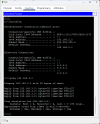HCHTech
Well-Known Member
- Reaction score
- 4,249
- Location
- Pittsburgh, PA - USA
First of all, my focus and experience is SMB clients. Most of my clients are too small to have servers (even more so now that M365 can fill that need for many small clients. I do have a few bigger clients with on-prem servers so I do have to deal with more-complicated networking on occasion. Also, 100% of my knowledge of networking comes from self-study and experience. I have no formal training, and never apprenticed under anyone who did.
Most of my experience with VLANs is with guest wifi networks. We set these up primarily for security so the guest traffic can be segregated and controlled. My biggest client has a VLAN setup for their backup traffic, and one of my smaller clients sublets a single office in his space,. so we setup a VLAN to segregate that traffic and avoid having to install separate internet service.
For large setups (multiple servers, many employees and multiple locations) beyond what I see with my clientele, I understand it's common to have VLANs for printers, VLANs for servers, VLANs for BMC, VLANs for backup traffic, etc. In addition to security benefits, these are done to minimize broadcast traffic which makes the regular LAN that workstations are on run more efficiently. As I understand it, anyway.
I've been thinking more about these kinds of setups and wondering where the "size line" is where it's best practice to have these multiple VLANs. How many workstations, how many users, how much traffic do you need where this makes sense and is worth the extra setup & maintenance?
Further, if you allow traffic between VLANs, like you have to do if you had printers on their own VLAN, for example; does this destroy the security advantages of having a VLAN? In other words, are you left with just the broadcast traffic and "organizational" benefits of a VLAN if you don't isolate the traffic?
Why? Mostly, I guess I'm trying to fine-tune my recognition of situations that call for VLANs so I don't under-serve clients in the desire for simplicity.
Most of my experience with VLANs is with guest wifi networks. We set these up primarily for security so the guest traffic can be segregated and controlled. My biggest client has a VLAN setup for their backup traffic, and one of my smaller clients sublets a single office in his space,. so we setup a VLAN to segregate that traffic and avoid having to install separate internet service.
For large setups (multiple servers, many employees and multiple locations) beyond what I see with my clientele, I understand it's common to have VLANs for printers, VLANs for servers, VLANs for BMC, VLANs for backup traffic, etc. In addition to security benefits, these are done to minimize broadcast traffic which makes the regular LAN that workstations are on run more efficiently. As I understand it, anyway.
I've been thinking more about these kinds of setups and wondering where the "size line" is where it's best practice to have these multiple VLANs. How many workstations, how many users, how much traffic do you need where this makes sense and is worth the extra setup & maintenance?
Further, if you allow traffic between VLANs, like you have to do if you had printers on their own VLAN, for example; does this destroy the security advantages of having a VLAN? In other words, are you left with just the broadcast traffic and "organizational" benefits of a VLAN if you don't isolate the traffic?
Why? Mostly, I guess I'm trying to fine-tune my recognition of situations that call for VLANs so I don't under-serve clients in the desire for simplicity.

